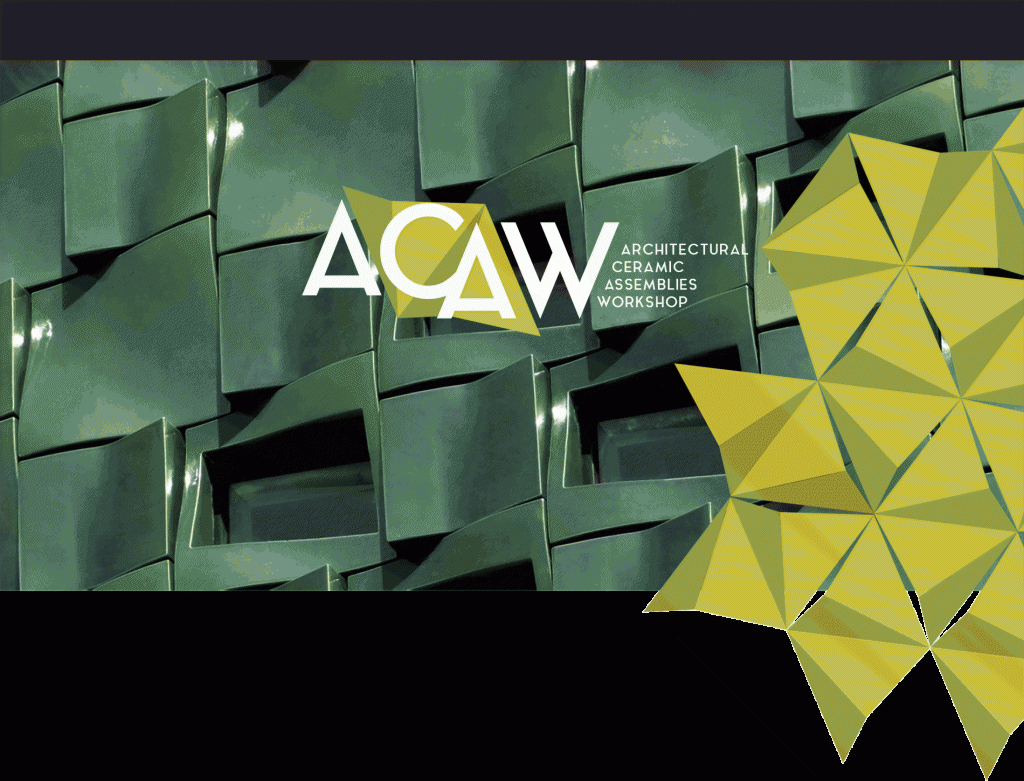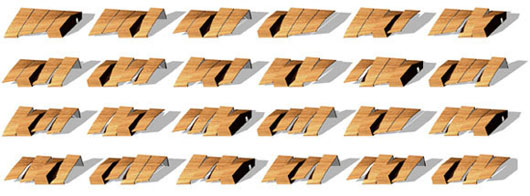 A workshop program dedicated to the experimentation of large-scale applications for ceramic components, the Architectural Ceramic Assemblies Workshop brings together a collection of interdisciplinary professionals working collaboratively in small groups to explore innovative ceramic façade solutions to architectural challenges. The ACAWorkshop combines the models of academic research, artistic experimentation, and industry expertise.
A workshop program dedicated to the experimentation of large-scale applications for ceramic components, the Architectural Ceramic Assemblies Workshop brings together a collection of interdisciplinary professionals working collaboratively in small groups to explore innovative ceramic façade solutions to architectural challenges. The ACAWorkshop combines the models of academic research, artistic experimentation, and industry expertise.
The material connection across multiple scales is one of the most important opportunities of the ACAWorkshop program: while most architects may employ industrially-produced ceramic components, they may have little material understanding of clay whereas most artists and designers trained in ceramics may have few opportunities to explore the medium at a scale beyond the object. While most residencies may allow artists to explore with the relationship of hand, to form/geometry, and material, the Architectural Ceramic Assemblies Workshop introduces experimentation and expertise in aggregation and production workflow.
This year’s workshop focuses on the bioclimatic use of facades in new construction and retrofitting buildings nearing the end of their façade life.
The Architectural Ceramic Assemblies Workshop is jointly housed between the University at Buffalo School of Architecture and Planning’s Hayes Hall and the production facilities of Boston Valley Terra Cotta in Orchard Park, NY with events in some of Buffalo’s most significant historical monuments. The Western New York region offers both a historical connection to clay experimentation and a contemporary ceramics research hub anchored between Boston Valley, the University at Buffalo, and Alfred University.
